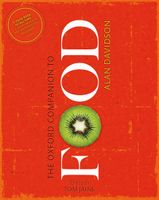Types of Protein
Published 2014
From the cook’s point of view there are two classes of protein, fibrous and globular. The difference lies in the way the long molecules are arranged. In a fibrous protein the chains lie lengthways like the strands of a rope. Examples are myosin, one of the chief proteins in muscles; and collagen, the main component of connective tissue such as cartilage. In a globular protein the chains are loosely bundled. Examples are ovalbumin, the main constituent of egg white; and casein in milk. All protein structures include a good deal of water, which makes up about three-quarters of the weight of muscle. A fibrous protein holds the water in a rigid network of strands. Globular proteins are dispersed in water, forming a thick liquid.
Become a Premium Member to access this page
Unlimited, ad-free access to hundreds of the world’s best cookbooks
Over 160,000 recipes with thousands more added every month
Recommended by leading chefs and food writers
Powerful search filters to match your tastes
Create collections and add reviews or private notes to any recipe
Swipe to browse each cookbook from cover-to-cover
Manage your subscription via the My Membership page
Part of
Advertisement
Related Recipes
-
-
-
-
Related Reference
-
-
-
-
Advertisement



